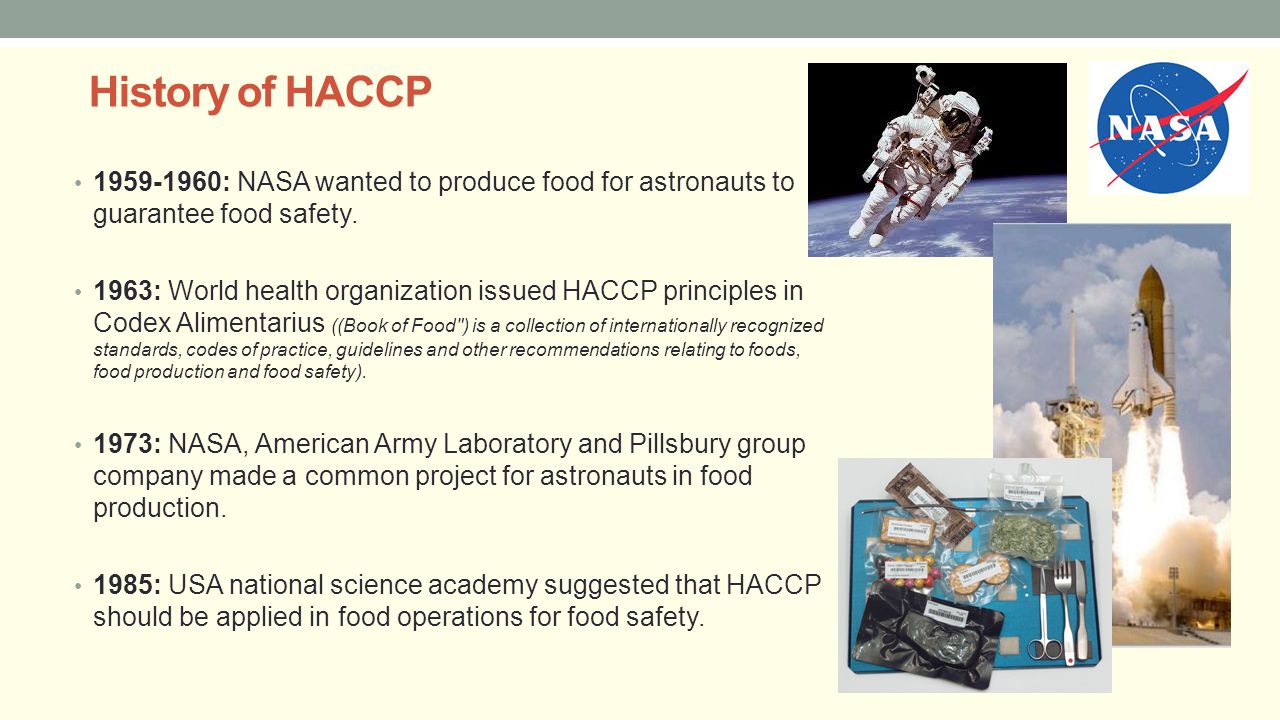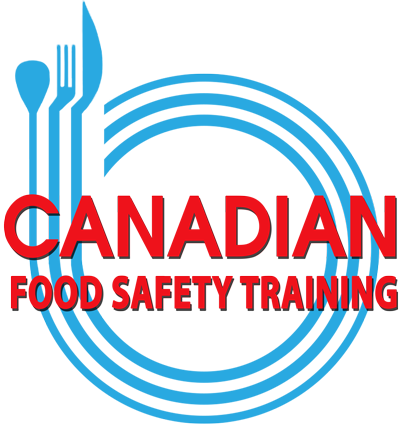Getting food poisoning is bad enough, who can image that at zero gravity?
NASA had to come up with a pretty good plan
With a collaborated effort between the Pillsbury Company, NASA, and the U.S. Army Laboratories they developed HACCP
Hazard Analysis and Critical Control Points

The objective was to provide safe food for space expeditions. By avoiding hazards, rather than attempting to inspect finished products for the effects of those hazards.
HACCP can be used at all stages of a food chain from food production and preparation processes including packaging, distribution, etc… learn more
The Seven Principles of HACCP
Principle 1 – Conduct a Hazard Analysis
The application of this principle involves listing the steps in the process and identifying where significant hazards are likely to Occur. The HACCP team will focus on hazards that can be prevented, eliminated or controlled by the HACCP plan. A justification for including or excluding the hazard is reported and possible control measures are identified.
Principle 2 – Identify the Critical Control Points
A critical control point (CCP) is a point, step or procedure at which control can be applied and a food safety hazard can be prevented, eliminated or reduced to acceptable levels. The HACCP team will use a CCP decision tree to help identify the critical control points in the process. A critical control point may control more that one food safety hazard or in some cases more than one CCP is needed to control a single hazard. The number of CCP’s needed depends on the processing steps and the control needed to assure food safety.
Principle 3 – Establish Critical Limits
A critical limit (CL) is the maximum and/or minimum value to which a biological, chemical, or physical parameter must be controlled at a CCP to prevent, eliminate, or reduce to an acceptable level the occurrence of a food safety hazard. The critical limit is usually a measure such as time, temperature, water activity (Aw), pH, weight, or some other measure that is based on scientific literature and/or regulatory standards.
Principle 4- Monitor CCP
The HACCP team will describe monitoring procedures for the measurement of the critical limit at each critical control point. Monitoring procedures should describe how the measurement will be taken, when the measurement is taken, who is responsible for the measurement and how frequently the measurement is taken during production.
Principle 5 – Establish Corrective Action
Corrective actions are the procedures that are followed when a deviation in a critical limit occurs. The HACCP team will identify the steps that will be taken to prevent potentially hazardous food from entering the food chain and the steps that are needed to correct the process. This usually includes identification of the problems and the steps taken to assure that the problem will not occur again.
Principle 6 – Verification
Those activities, other than monitoring, that determine the validity of the HACCP plan and that the system is operating according to the plan. The HACCP team may identify activities such as auditing of CCP’s, record review, prior shipment review, instrument calibration and product testing as part of the verification activities.
Principle 7 – Recordkeeping
A key component of the HACCP plan is recording information that can be used to prove that the a food was produced safely. The records also need to include information about the HACCP plan. Record should include information on the HACCP Team, product description, flow diagrams, the hazard analysis, the CCP’s identified, Critical Limits, Monitoring System, Corrective Actions, Record-keeping Procedures, and Verification Procedures.
Learn more about Hazard Analysis and Critical Control Points by taking our food handler training. Our Food Handler Training calendar can be found here.
Watch this YouTube video for a brief History
https://youtu.be/XbRhkTMJ4Jk


